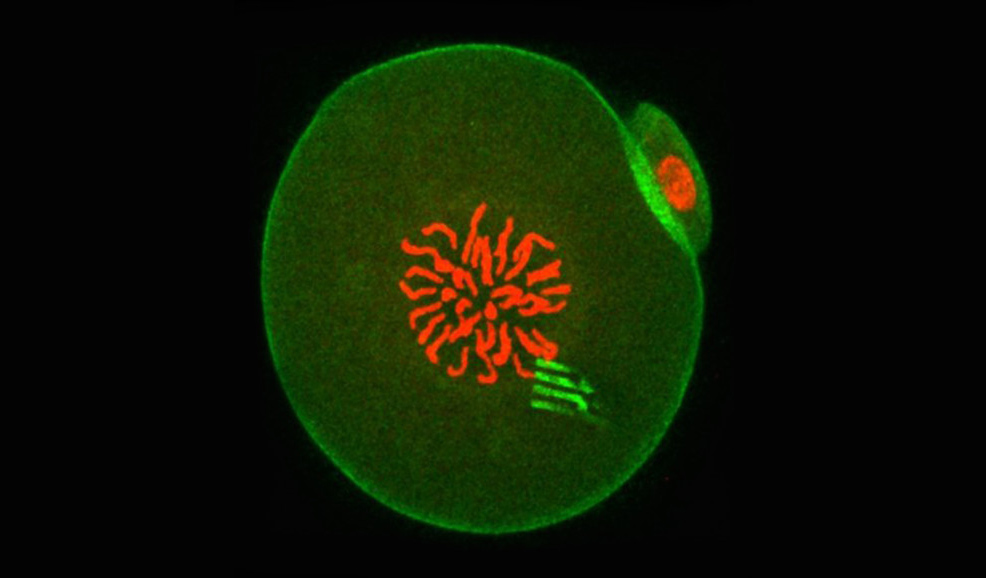
31st May 2020 Nanodevices track how cells change from inside For the first time, scientists have added microscopic tracking devices into the interior of cells, giving a peek into how development starts.
For the first time, scientists have introduced minuscule tracking devices directly into the interior of mammalian cells, giving an unprecedented peek into the processes that govern their early development. This work on one-cell embryos could advance our knowledge of the mechanisms that underpin cellular behaviour in general, and may ultimately provide insights into what goes wrong in aging and disease. The research team, led by Professor Tony Perry at the University of Bath, injected a silicon-based nanodevice together with sperm into the egg cell of a mouse. This resulted in a healthy, fertilised egg containing a tracking device. The process was successfully repeated for several cells, as seen in this video. The devices are rather like spiders, complete with highly flexible "legs". The extended limbs can detect "pulling and pushing" forces exerted in the cell interior to a very high level of precision, thereby revealing the cellular forces at play and showing how intracellular matter rearranges itself over time. The nanodevices are incredibly thin – like some of the cell's structural components, and measuring 22 nanometres, making them 100,000 times thinner than a pound coin. This means they have the flexibility to register the movement of the cell's cytoplasm as the one-cell embryo embarks on its voyage towards becoming a two-cell embryo.
"This is the first glimpse of the physics of any cell on this scale from within," explains Professor Perry, who works in the Department of Biology and Biochemistry. "It's the first time anyone has seen from the inside how cell material moves around and organises itself." The activity within a cell determines how that cell functions, explains Perry: "The behaviour of intracellular matter is probably as influential to cell behaviour as gene expression." Until now, however, this complex dance of cellular material has remained largely unstudied. As a result, scientists have been able to identify the elements that make up a cell, but not how the cell interior behaves as a whole. "From studies in biology and embryology, we know about certain molecules and cellular phenomena, and we have woven this information into a reductionist narrative of how things work, but now this narrative is changing," says Perry. "The narrative was written largely by biologists, who brought with them the questions and tools of biology. What was missing was physics. Physics asks about the forces driving a cell's behaviour, and provides a top-down approach to finding the answer. We can now look at the cell as a whole, not just the nuts and bolts that make it." Mouse embryos were chosen for this study because of their relatively large size (100 microns, which is 10 times larger than a regular cell). This meant that inside each embryo, there was space for a tracking device. The researchers took measurements by examining video recordings taken through a microscope as the embryos developed. "Sometimes the devices were pitched and twisted by forces that were even greater than those inside muscle cells," said Perry. "At other times, the devices moved very little, showing the cell interior had become calm. There was nothing random about these processes – from the moment you have a one-cell embryo, everything is done in a predictable way. The physics is programmed." The results add to an emerging picture of biology that suggests material inside a living cell is not static, but instead changes its properties in a pre-ordained way as the cell performs its function or responds to the environment. The work may one day have implications for our understanding of how cells age, or stop working in disease conditions. The study is published this week in Nature Materials.
Comments »
If you enjoyed this article, please consider sharing it:
|







